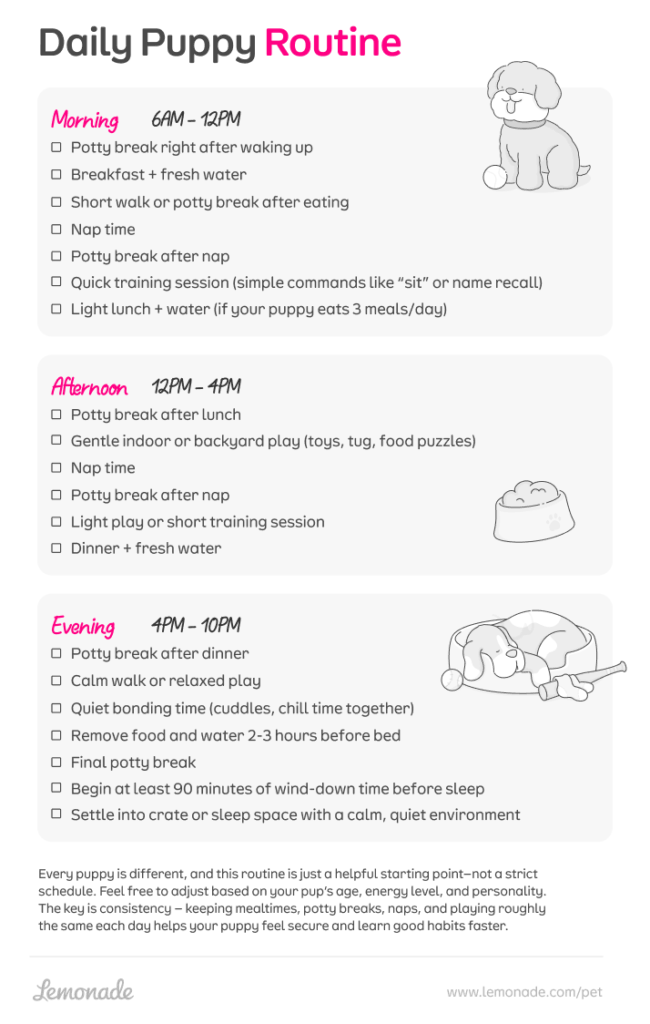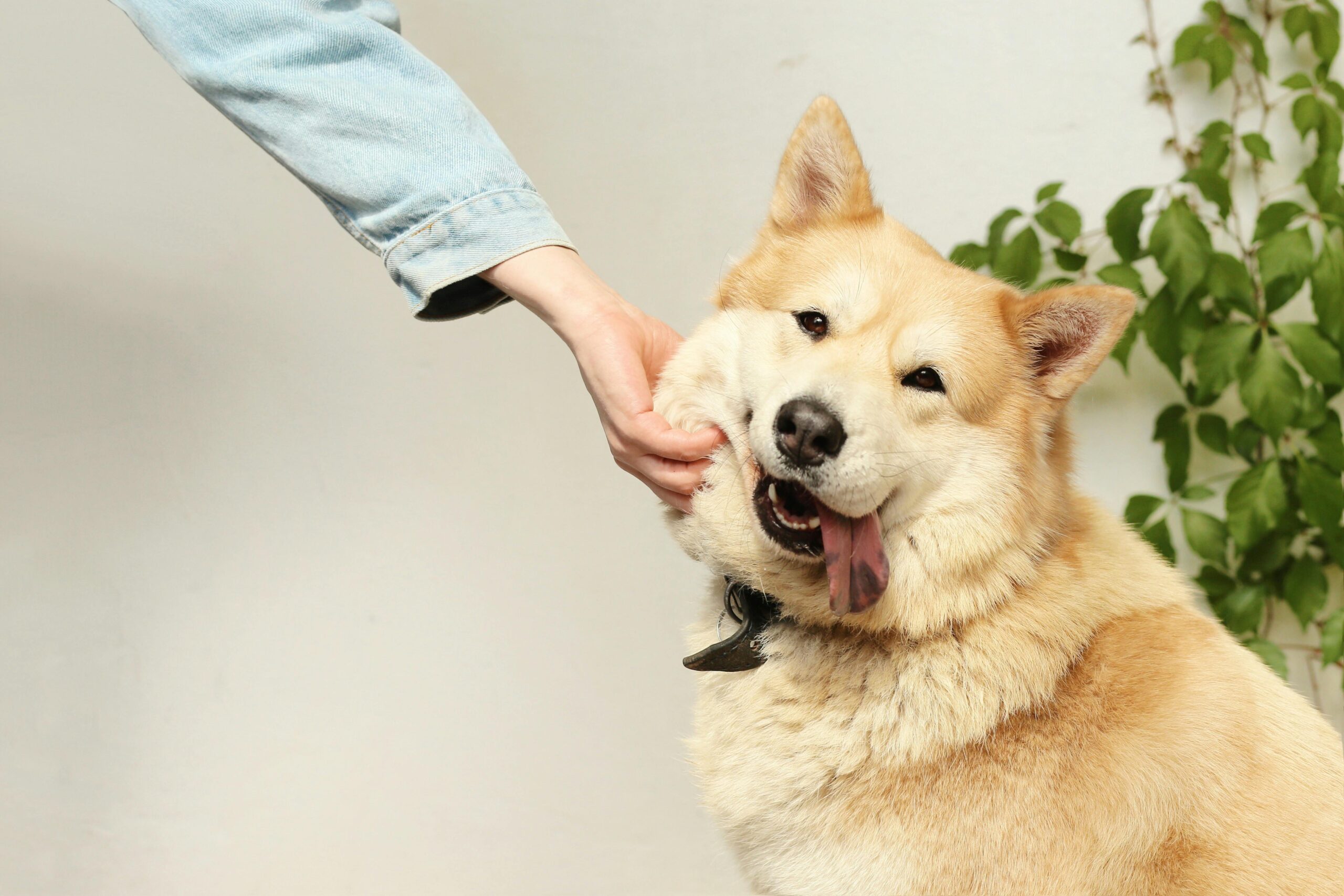- 1. Get supplies
- 2. Introduce one room at a time
- 3. Let your dog approach you first
- 4. Watch their body language
- 5. Reward good behavior every time
- 6. Teach basic commands
- 7. Pay attention to playtime
- 8. Set a consistent daily routine
- 9. Involve everyone in the house
- 10. Spend extra time together
- 11. Introduce other pets slowly
- 12. Strengthen your relationship long term
- FAQs
Building a strong bond with your dog is one of the most rewarding aspects of being a pet parent. Whether you’ve just welcomed a new puppy, an adult dog, or a rescue dog into your family, taking the time to understand and connect with your furry friend will create a trusted and loving relationship.
To help you get started, we spoke with dog trainer Ethan Steinberg who shares simple tips to build trust and strengthen your bond.
1. Get supplies
Before bringing your dog home, make sure you have the essentials ready. This includes:
- A harness, leash, and collar
- An identification tag
- A comfortable dog bed
- A few toys (not too many, as it can be overwhelming)
- High-quality dog food and treats
- A crate to provide a safe space
- Baby gates to keep your dog secure if needed
Having everything set up in advance will ease the transition into their new home.
2. Introduce one room at a time
Help your dog adjust to their new home by starting small. Pick one room where they can settle in with their bed, food, water, and a toy. Once they feel comfortable in that space, gradually introduce them to other areas of your home. Taking it slow reduces anxiety and helps them feel safe.
Gradually expose them to new situations without overwhelming them, and don’t rely too heavily on treats—build trust through calm, consistent guidance.
3. Let your dog approach you first
Give your dog time to get comfortable. Avoid overwhelming them with too much attention. Let them come to you when they’re ready—this helps build trust and makes them feel more in control of their new surroundings.
4. Watch their body language
Understanding your dog’s body language helps you know what they need. Look for signs that show they’re calm and happy:
- Relaxed eyes and a soft wagging tail
- A slightly open mouth with their tongue out
- Playful poses like lowering their chest while raising their tail
On the flip side, here are signs your dog might be feeling scared, nervous, or even aggressive:
- Ears pinned back or tail tucked between legs
- Lip licking or yawning when not tired (signs of stress)
- Growling, stiff body posture, or a fixed stare
- Avoiding eye contact or trying to hide
Learning how your dog communicates makes it easier to build trust and deepen your bond.
5. Reward good behavior every time
Use positive reinforcement in every interaction. Reward good behavior with treats, praise, or extra snuggles. Avoid punishment, as it can damage your relationship and create fear. Showing kindness and patience will help your dog feel secure and loved.
Dogs naturally repeat behaviors that lead to positive outcomes. By consistently rewarding the good and guiding them through the bad, you become a reliable and trusted leader in their life.
Ethan Steinberg
6. Teach basic commands
Training is more than just teaching commands—it’s an opportunity for bonding. Start with basic commands like “sit,” “stay,” or “come.” Once your dog masters those, try new skills or activities like agility training or nose work. Training sessions keep your dog mentally engaged and strengthen your connection.
Dogs are incredible companions, and good training allows us to include them in more aspects of our lives. For example, a well-trained dog can calmly join you at an outdoor restaurant or confidently play fetch off-leash—even when distractions like squirrels or other dogs arise.
Ethan Steinberg
Steinberg also recommends interactive feeding. “Instead of simply serving kibble in a bowl, have your dog work for it by luring them into sit or stay positions,” he says. “This 15-minute exercise builds mental engagement and reinforces obedience.”
7. Pay attention to playtime
Dogs thrive on active playtime. Find out what your dog enjoys the most, whether it’s fetch, tug-of-war, or chasing toys. Playing together builds a stronger relationship and helps burn off energy.
8. Set a consistent daily routine

Dogs love consistency. Establish a daily routine for feeding, walks, playtime, and bedtime. A predictable schedule makes your dog feel secure and helps them understand what to expect. This will also reinforce good behavior over time.
In fact, in Lemonade’s survey based report, 47% of dog parents say that having a regular schedule and routine is one of the most essential parts of keeping their pup happy and healthy.
Not sure where to start? Download our Puppy Schedule PDF to stay on top of the day’s meals, naps, potty breaks, and more.
9. Involve everyone in the house
If you have family members, make sure everyone is involved in your dog’s care. Assign responsibilities like feeding, walking, or playtime. This encourages the whole family to bond with your dog and ensures they feel equally loved by everyone.
10. Spend extra time together
Your dog adores your attention, so include them in your daily activities whenever possible. Here are a few ways to bond:
- Take regular walks together
- Talk to your dog in a soothing, happy tone
- Brush their fur or give them a pampering bath
- Share cuddles or snuggle up on the couch
Spending intentional time together shows your dog how much you care.
11. Introduce other pets slowly
If you already have pets, take it slow when introducing your new dog. Keep them in separate spaces at first, allowing them to get used to each other’s scent. Supervise initial interactions and monitor their behavior closely.
12. Strengthen your relationship long term
Building a strong relationship with your dog isn’t a one-time effort; it’s an ongoing process. Keep reinforcing positive behaviors, spend quality time together, and continue training to maintain a strong bond. Over time, your dog will become not just a pet, but your best friend.
Understanding your dog’s needs and providing them with love and care will lead to a fulfilling relationship that brings joy to both of you.
Before we go…
Dogs like consistency and are rule followers. While teaching them to be on their best behavior benefits everyone, it’s also time spent together that your dog will love. Being present for your dog boosts loving bonds now, and forever.
Strengthening that relationship also means ensuring that your pup is as happy and healthy as possible. Lemonade pet insurance can help take the bite out of vet bills you’ll encounter over the years—your best friend will thank you. Click below to get your quote in minutes.
FAQs
How long does it take to bond with a new dog?
It depends on the dog’s age, background, and temperament. Many dogs begin to bond within a few weeks, but it can take several months to build deep trust—especially for rescues or adult dogs with difficult pasts.
What are signs my dog is bonded with me?
Look for signs like following you around, making eye contact, wagging their tail when you walk in, sleeping near you, and being responsive to your voice or commands.
Can you still bond with an older dog or rescue?
Absolutely. While it might take more time and patience than with a puppy, adult dogs are fully capable of forming strong, loving bonds. Establishing routines and using positive reinforcement are key.
What should I avoid when bonding with a new dog?
Avoid overwhelming your dog with too much attention, using punishment, or forcing interactions with new people or pets. Let your dog adjust at their own pace.
Is training important for bonding?
Yes! Training is one of the best ways to bond with your dog. It builds communication, trust, and teamwork. Use positive reinforcement to make it fun and rewarding.
A few quick words, because we <3 our lawyers: This post is general in nature, and any statement in it doesn’t alter the terms, conditions, exclusions, or limitations of policies issued by Lemonade, which differ according to your state of residence. You’re encouraged to discuss your specific circumstances with your own professional advisors. The purpose of this post is merely to provide you with info and insights you can use to make such discussions more productive! Naturally, all comments by, or references to, third parties represent their own views, and Lemonade assumes no responsibility for them. Coverage and discounts may not be available in all states.




